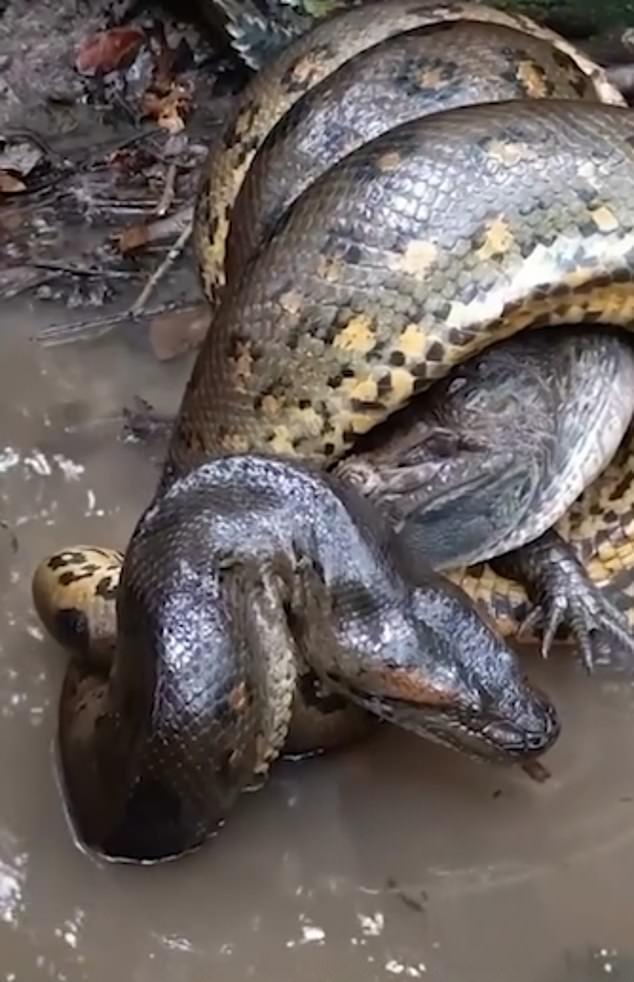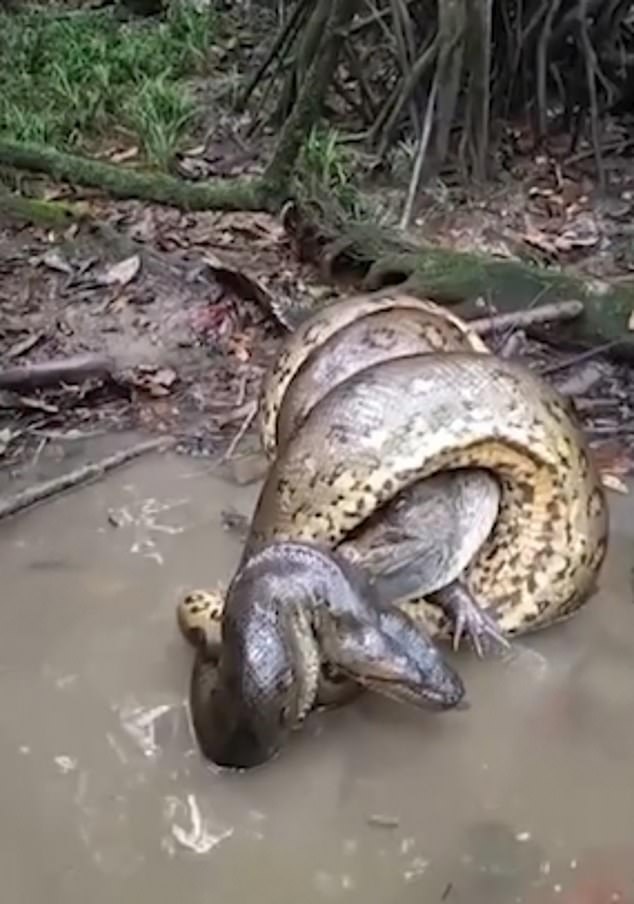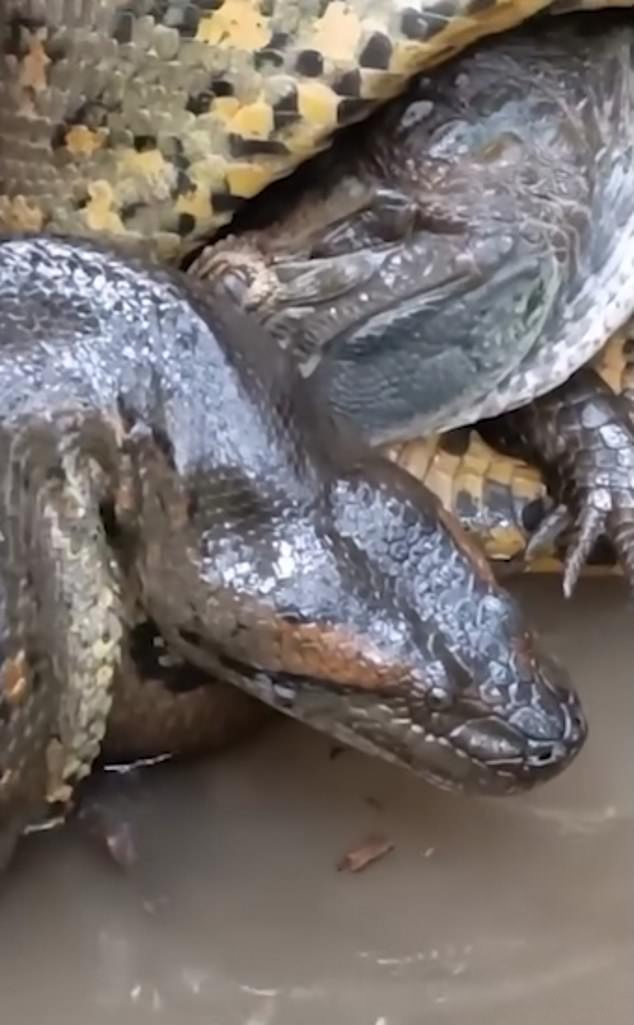Predator becomes prey: moment anaconda crushes caiman to death in the Amazon rainforest by wrapping itself around the victim in a ‘fatal hug’
A giant anaconda was seen crushing a caiman to death and curling around the predator in a ‘fatal hug’.
The enormous snake wraps itself tightly around the caiman as the animal appears to groan helplessly in pain.
The larger reptile thrashes its tail in an attempt to break free from the snake’s merciless grasp, but its efforts to escape are in vain.
It was no match for the anaconda, a species of snake that is the largest in the world and can grow up to nine meters in length.
The caiman is a species related to alligators in the Alligatoridae family – with adults growing up to 4 meters in length.
The reptiles are intertwined, half submerged in the water, while the snake strangles its victim

The anaconda wraps itself tightly around the caiman and a groaning sound is heard as the animal struggles to escape
The deadly encounter was filmed on the waterfront of the Amazon rainforest in remote Brazil.
The cameraman comes dangerously close to the terrifying collision, the snake peering menacingly upward as it finishes off its victim.
You can also see the caiman’s eye and claws protruding as it faces almost certain death.
A resident said: ‘Nature is mysterious. One day you’re a predator, the next day you’re prey.’
It was also speculated that the moaning sound was made by the young alligator as a ‘signal to call for his parents’ help.’
Another person noted that at the end of the footage it is possible to hear the caiman’s bones breaking.
Last month, scientists announced that the giant anaconda, also known as the green anaconda, is actually two different species that differ genetically by 5.5 percent.
Humans and chimpanzees differ genetically by only about 3 percent.

The reptile thrashes its tail in an attempt to break free from the snake’s merciless grasp, but its attempts to escape are in vain

The cameraman comes dangerously close to the terrifying collision, as the snake peers menacingly upward as it finishes off its victim
The discovery of the Northern Green Anaconda was published on February 16 in a study in the scientific journal Diversity.
Professor Jesus Rivas, the lead author of the study, explained that they first realized that there was more than one species of green anaconda more than fifteen years ago.
Together with his wife Dr. Sarah Corey-Rivas, they began analyzing samples to detect genetic differences.
Professor Rivas said: ‘I have been studying anacondas for 32 years, so this begs the question of how many other species there are that we don’t know about.’
He added: ‘This finding is humbling when it comes to the true diversity of South America.’
